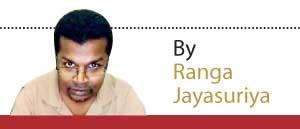JVP’s Chances at the Presidency
Opinion Polls Say, Anura K is the Frontrunner for the Presidency. Is that for real?
Two weeks back, crisis-hit Argentina elected a far-right outsider as the President, ending nearly eight decades of dominance of the mainstream right and left in the politics of South America’s second-largest economy. President-elect Javier Milei, a libertarian and a media showman, rode on a wave of public anger at the political establishment, as inflation hit triple-digit levels and the country was stuck in yet another sovereign debt crisis. Argentina is the longest-running case of the middle-income trap. Being one of the richest countries in the world in the early 20th century, the Argentinian economy has lurched from crisis to crisis since the early 30s. It defaulted on debt nine times, including three times in the 21st century – the latest default included a US$ 45 billion IMF funding facility extended during the previous crisis.
America’s second-largest economy. President-elect Javier Milei, a libertarian and a media showman, rode on a wave of public anger at the political establishment, as inflation hit triple-digit levels and the country was stuck in yet another sovereign debt crisis. Argentina is the longest-running case of the middle-income trap. Being one of the richest countries in the world in the early 20th century, the Argentinian economy has lurched from crisis to crisis since the early 30s. It defaulted on debt nine times, including three times in the 21st century – the latest default included a US$ 45 billion IMF funding facility extended during the previous crisis.
Mr Miles’s litany of controversial remedies looks more destabilizing than being a coherent fix. However, he has succeeded in exploiting the popular sense of despondency. He has offered to dollarize Argentina’s economy, ditch the national currency, “dynamite” the Central Bank, shut the ministries, including education, health and social welfare, and introduce Bitcoin as legal tender.
However, Argentina is not necessarily an outlier of a global trend of far-right and nationalist takeover of governments.
The same week, far-right and Islamophobic Geert Wilders and his Freedom Party – which canvassed to ban mosques and the Quran and end the ‘tsunami of asylum seekers’ – won the Dutch elections. Elsewhere in Europe, the far-right is the dominant party in governments in Italy, Switzerland and Hungary and partners in Finland and Sweden. In the USA, Donald Trump, once an outsider, has hijacked the Republican Party and leads Joe Biden in opinion polls.
The factors that led to their success vary from Argentina’s economic woes to growing opposition to the unchecked migration to Europe and aggrieved white working-class pride in the US. However, everywhere, the far right and the nationalists – and in rare cases, the far left, as in the case of Chile – managed to convert the protest vote into an election winner.
the latest round of polling in October shows Anura Kumara Dissanayake of JVP and the National People’s Power (NPP) gaining the support of half of the likely voters (51 per cent). Sajith Premadasa comes second with 30 %, and President Ranil Wickremesinghe on 13%.
Anura K Leads the Opinion Polls
The prospect of this global trend being replicated in Sri Lanka is very real. In the Sri Lankan case, though the likely shift is not to the right but to the left, which is equally untested and is offering pie-in-the-sky solutions to the pressing economic problems, if it ever turned out to be real, the consequences of these choices would be a lot more devastating than the serial ideocracies of Gotabaya Rajapaksa.
Consider the opinion polls – though you might need to take them with a pinch of salt – the latest round of polling in October by the Sri Lanka Opinion Tracker Survey (SLOTS) of the Institute for Health Policy (IHP) shows Anura Kumara Dissanayake of JVP and the National People’s Power (NPP) gaining the support of half of the likely voters (51 per cent). Sajith Premadasa comes second with 30 %, and President Ranil Wickremesinghe on 13%.
A “generic” candidate for the ruling Sri Lanka Podujana Peramuna (SLPP) was on six per cent.
One might cast reservations about the reliability of data: samples look as if they were picked from the picket lines of Colombo and provinces. Also, what people say in the opinion polls and how they vote at elections may differ. However, considering the Sri Lankan political psyche, one should not be surprised if these numbers or something partially similar – such as the Presidential Elections going for a second round – becomes a reality.
A Protest Vote Could End Up Being A Poisoned Chalice
Like elsewhere in the world, where the fringe succeeded in out-manning the mainstream, JVP’s success is not its own feat but the establishment’s failure.
Project Director Ravi Rannan-Eliya commented on the polling results saying, “I suspect this is less voters buying the NPP/JVP policy platform and more voters rejecting the political establishment and the business-as-usual. Establishment parties wanting to compete with the NPP probably need to be doing some serious soul-searching.”
Mr Dissanayake and the JVP/NPP have managed to capitalize on public fury at the economic hardships. Though the JVP has been party to the successive SLFP governments under Chandrika Kumaratunga and Mahinda Rajapaksa, it projects itself as a political outsider and as the alternative government in waiting.
This has not only given liberty to the JVP leadership to criticize the two main parties for the economic failure but has also absolved it from offering meaningful and practical solutions to the pressing economic problems. Any semblance of solutions offered is generalizing, lacking depth, and designed for a receptive, like-minded audience, and to exploit the anger of the Sri Lankans.
Self-Seeking and self-Contradictory
They are also self-contradictory; they blame rising government spending and at the same time oppose the cutting down on social welfare. They condemn rising debt and at the same time demand wage increases; they criticize the government for underperforming State Owned Enterprises (SOEs) but oppose their restructuring.
And they lack depth. They emphasize the need to build an export-driven economy, everyone else does too, but then, they oppose the mandatory economic, labour, land, legal, and trade reforms to bridge the local economy with the global supply chains.
They lament the brain drain – of which the scope is exaggerated – but oppose private universities that could provide a real leg up for most Sri Lankan youth.
However, these glaring inconsistencies are not registered in the average local voter, nor are they tackled in the usual media interviews and talk shows. The average voter is more than content with the shared outrage over-pouring on the political stage. Yet the protest vote is a poisoned chalice. This would come to haunt Sri Lanka.
Everyone with average intelligence could identify the fundamental economic problems in Sri Lanka. Still, a few would manage to dissect the actual causes, fewer would offer realistic long-term solutions, and even fewer would persist with their successful implantation.
The JVP succeeds only in the first – identifying the problems – and fails in the rest of the process. The SLFP might have managed two, but its fixes were guided by rent-seeking initiatives and ideological straightjacket. The UNP and SJB do well until the third but have miserably failed in the fourth. They generally have a good idea of the fixes or are willing to listen to the right people and not the economic cavemen the Rajapaksas had as advisors. However, the UNP has consistently exhibited a lack of political will to turn its economic vision into reality, worst still the SJB does so even before it has a serious shot at political power.
Gotabaya Rajapaksa kicked an ailing economy down the precipice due to his egoistic ideocracy. However, the current economic crisis is the ultimate outcome of a long-term refusal of economic liberalization. Blame the people for opposing every other reform measure. Blame the successive governments for lacking political will like their saucerful counterparts in the East and South East, and probably Chile had during different times of their history. The JVP shows no commitment to economic liberalization, nor does it have the right ideological inclination and intellectual sophistication to lift the country out of the economic crisis. It might make things worse and cause Gotabaya’s destruction of the economy to look like child’s play.






